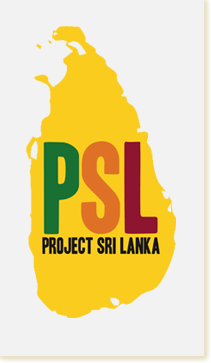Planting, irrigation, production, export – Day 3
We were the only group that had to leave early today and of course were the only ones down at the restaurant 7.30 in the morning, ready for a quick breakfast then leave. We arrived at the university at 9am. Mr Kumarsinghe came with us to head to our first stop.
We saw all kinds of animals on the drive to the university. we saw a mongoose today and were super excited about it . Dogs were everywhere , running across the street, along the road, lying alsmost in the middle of the road. I kept freaking out every time we drove by a dog, hoping we wouldn’t run over the poor little thing.
We went through a market area that looked like a fair/ swap meet with tents selling clothes and other things on the street.
10.30am – we arrived at the coconut research institute. Coconuts trees there were shorter than most the ones we saw along the streets. Mr. Kumarsinghe explained to us that these were very young coconut trees, ranging from 2-4 years old. We took a tour around the facility and learned a lot more about the coconut planting process as well as the irrigation problems.
12.30pm – we headed to our second stop. There we had a chance to taste the dry coconut kernel for the first time. The owner showed us the stove where the nuts – separated from husks, were burned for 10 hours then 6 hours on a second stove to dry out the juice inside and attract more coconut oil from the kernel.
Throughout the day, there were a few issues that I had noticed, mainly from cultural differences. The first problem was communication. Because the local business owners as well as Mr Kumarsinghe, who showed us around, were having a hard time understanding our questions, sometimes they gave us answers completely different from what our questions were about. I find it hard to get to the roots of the coconut production problem, having encountered the language barriers. The second problem was differences in the way of doing business. Mr. Kumarsinghe was very detailed in the information he provided us. However, there was a lot of waiting time because we had to wait, on a few occasions, for the business owners that we came to meet with.
2pm we took a lunch break and headed to a local all you can eat restaurant. The food was amazing.
3pm – we headed to our last destination. Mr Kumarsinghe is actually a consultant for this business. Cocopel produces and exports coco-pellets to UK, US, Holland, and Spain. The company was funded by foreign investment – BOI (Board of investment) from a Norwegian capital venture. Through this relationship, the company gets to enjoy 15 years free of tax, one of the government’s policy to attract foreign investment. The company employs 85 local workers, 75 of those are women. Most of the production process were done by machines. The owner also invited us to try some coconut juice, which was absolutely refreshing.
4pm – we headed back to the university, which was 2 hours away. We dropped off Mr Kumarsinghe and headed back to Jagabay. On the way back we were all exhausted. Traffic was really bad and we were a bit nervous watching one vehicle after another running into us. We arrived at the hotel at 7pm.
It was a very productive day.
